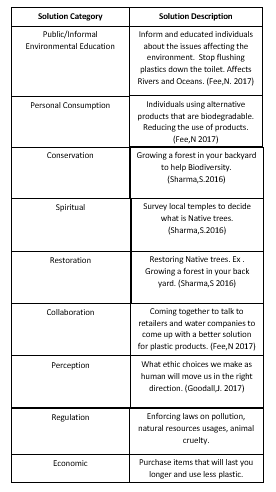History on environmental thoughts in the US started as early
as in mid 18th century. A gentle man by the name of Jared Eliot
wrote about the need for better farming methods. During the mid 19th
century the growth on society became a concerned that three groups formed and
had influenced in the relation of the environment they were the “resource
efficiency” group, transcendentalist movement, and the organized industrial
interests. The Resource Efficiency group established fields in environmental
science and engineering, agronomy, agriculture engineering, and public health. Many
individuals contributed to this group and understanding the scientific
underpinning of the environment and educating practitioners. Transcendental
Movement leader was Ralph Waldo Emerson, Emerson set new ways of envisioning a
relation to the natural world. His vision was seen through appreciating mother
nature. The organized industrials had a different mindset. The focus was to
provide employment and not control the legacy and laid a foundation for
advances in Environmental Policy. National parks and wildlife refuges were made
for commercial and recreational use by society, communication on the impact of
pollution on human health and welfare. Environment Risk Management prominence
in the 19th century and beginning of the 20th century. Environmental
Risk Management communicated to those that were impacted by a form of
industrial hygiene and sanitary engineering. As time went by the risk assessment
were applied to the natural environment. Many environmental scientists were surprised
by the amount of documentation of damage that was being created. In 1970 the
NEPA establishment a national goal to create and maintain conditions of humans and
animals. Both the environmental policy and the risk management have been able
to try to come up with solutions to help mitigate an environmental issue that
could cause damage to the environment and or a human. Although that this policy
was created over the past two centuries, we are slowly doing damage to the
environment since there is some laws that do not protect the environment such
as developing more businesses and housing to accommodate for the population, this
then creates other issues such as health issues. The more development that occurs the more
that green belts and nature spaces are taking away the more vehicle are used and
that creates more emissions. The emissions are then inhaled by humans which
tend to create more health issues. Vehicles many be able to get us to point a to
point b but they could also impact the water quality. The chemicals that a car
releases oils, gas, etc. has the potential to go into the ground and into the water
streams that could cause a contamination. With the population growing and
developers developing and clearing out natural resources that is contributing
to global warning issues that we are experiencing in today's world. These policies
that have been created and implemented still don’t stop the damage that we cause
to the environment and humankind. As the population continues to grow and new
ways begin to evolve to try to minimize pollution and conservation natural resources,
we end up creating another wicked idea that impacts something else.
References: Theis, T., & Tomkin, J. (Eds). (2018). Sustainability: A comprehensive foundation. OpenStax CNX. THEISandTOMKIN_Sustainability-a-Comprehensive-Foundation-45.1.pdf
Russell, E., & Fairfax, S. K. (2014). Guide to U.S. Environmental Policy. CQ Press. Chapter 28, see specifically pp. 400 - 407.
References: Milestone infographic timeline provided by: Microsoft Corporation.


Georgina, you did a great job explaining some of the more common environmental issues we face as well as the never-ending cycle that comes with our attempted solutions. In previous lessons, I have tried explaining this myself as well. The issue is, it seems like no matter how hard we (or scientists) try to create solutions to these issues, like pollution, because that solution isn't perfect, we get discouraged. With the solution, might come more issues to face, and we end up going back to square one. And like you mentioned as well, even though we had the environmental policy and risk management helping us improve and keep our environment safe, we still continue to grow our businesses and industrial lifestyle society.
ReplyDeleteThough it seems like a small step towards many years of future work to do, I came across the EPA page of information on 2022 new regulations that were made in terms of our environment. On the topic of air pollution due to the use of vehicles, it seems that aircrafts also emit gasses that contribute to this problem. And more recently, the EPA finalized particulate matter (PM) emission standards and test procedures for these civil aircraft engines. Again, baby steps, but this introduction to emission control could lead to bigger and better things for the future of our environment. This could serve as an influence to the creation of new engines for our vehicles so that they don't emit as much harmful gasses as they do now. It is all about possibility and being rightfully aware of these issues so we can continue to do better and think of more solutions that aren't as temporary.
source:
“Regulations for Emissions From Aircraft Engines.” US EPA, 15 Nov. 2022, www.epa.gov/regulations-emissions-vehicles-and-engines/regulations-emissions-aircraft-engines.